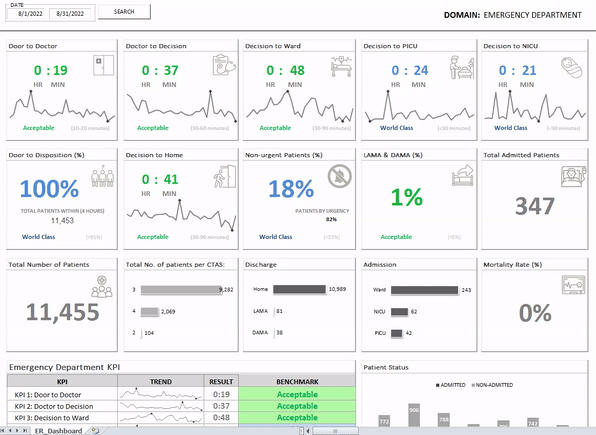

Emergency Room(ER) Status Dashboard
An ER (Emergency Room) status dashboard is a tool used to monitor and display the current status and activity of an emergency room or a hospital's emergency department. By monitoring ER wait time and patient status, hospital staff can better respond to patient needs and deliver a high-quality service that reflects when on the entire organization.
Skills and deliverables
Healthcare, KPIs, Excel Macros VBA, Pivot Table, Dashboard
Challenge
Within hospitals, emergency departments stand as one of the most high-pressure environments, where the emergency team confronts constant challenges. Succeeding in this setting demands a specific type of confident and skilled medical staff. With a diverse array of patients, from ambulance arrivals to individuals with a wide range of injuries and illnesses, and operating round-the-clock, it becomes a bustling and demanding place.
Solution
The integration of data science and healthcare is revolutionizing emergency room challenges. With real-time insights and analytics, emergency departments can make informed decisions, optimize resource allocation, and enhance patient care. Data-driven approaches lead to reduced wait times, improved patient experiences, and the identification of patterns to refine clinical guidelines. As data science and healthcare join forces, emergency rooms become more efficient and effective in providing life-saving care.
Objectives
The primary objective is to reduce the average wait time in the emergency room (ER), a crucial measure influencing patient experience and satisfaction. This healthcare dashboard provides a breakdown of the average waiting time across different divisions, enabling the identification of units facing issues. Prolonged waiting times for specialist consultations may indicate staff training deficiencies or understaffing, necessitating more nurses and doctors. Additionally, equipment shortages may become evident and require attention. Monitoring this indicator based on hours or days of the week allows for more efficient staff allocation based on varying demands.

